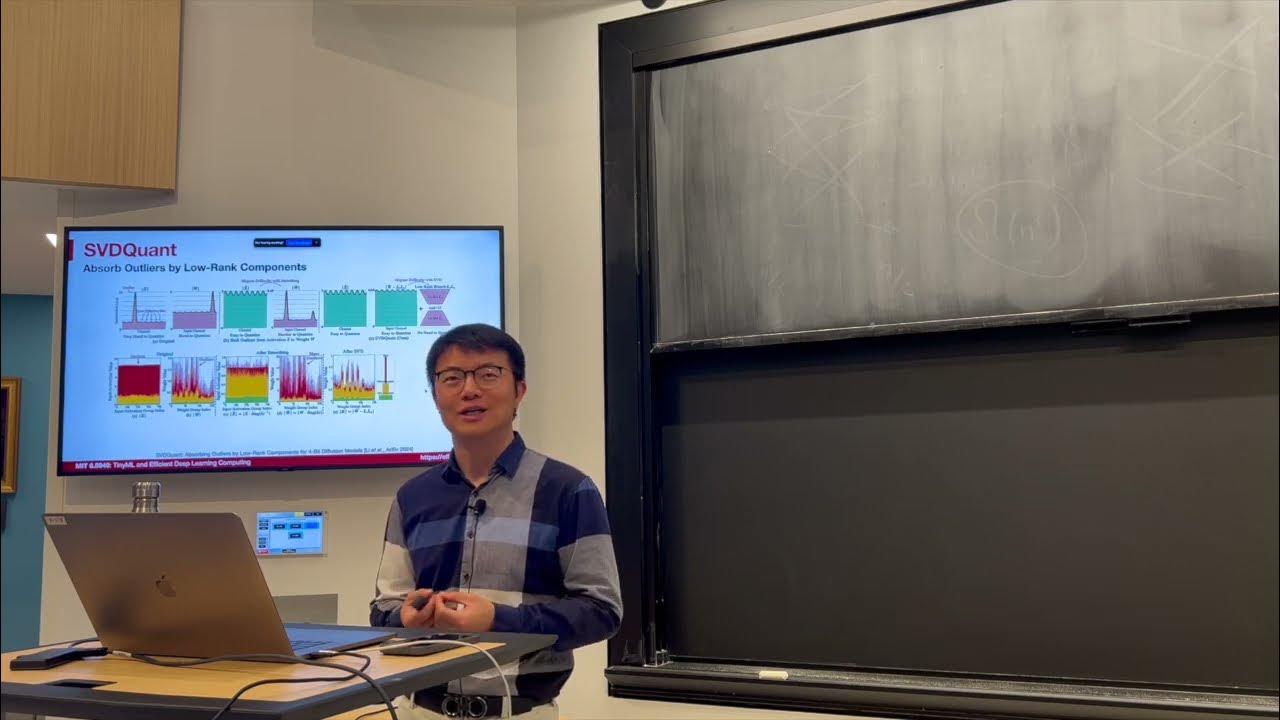Your LLM Already Knows The Future (by Apple)
Summary
TLDRThe video discusses an advanced method for optimizing language models, specifically focusing on a fine-tuning approach that significantly improves prediction speed without compromising quality. By using a gated architecture for fine-tuning only certain tokens (MTP tokens), the model maintains its original performance. The speaker compares this method to traditional approaches, showing that it prevents degradation in quality. With a 500% speed boost and no loss in text generation quality, the approach is presented as a simple yet highly effective optimization method, with credit given to Apple's contribution in developing this technique.
Takeaways
- 😀 The classical approach to LLM fine-tuning can degrade performance when applied to all tokens.
- 😀 A gated Lura architecture was introduced to optimize the fine-tuning process by focusing only on MTP tokens.
- 😀 The new approach avoids backpropagation of gradients to non-MTP tokens, preserving the original model performance.
- 😀 Cross-entropy loss was used to measure the effect of the new method, showing no performance degradation for the model when the gated architecture was applied.
- 😀 The standard Lura approach showed performance degradation as the model was trained, whereas the gated architecture kept the performance stable.
- 😀 The new method achieves a 500% speed-up without any degradation in the quality of generated text.
- 😀 The optimization process involved five simple steps that leveraged existing knowledge, leading to a significant performance boost.
- 😀 Apple's contribution to AI optimization involved developing a supervised fine-tuning methodology that works seamlessly with classical LLMs.
- 😀 The architecture tweak is relatively simple but provides significant improvements in AI speed and efficiency.
- 😀 The implementation of this method provides a clear path to better efficiency in AI systems without sacrificing quality.
- 😀 The simplicity and effectiveness of the method are considered groundbreaking, opening up new possibilities for AI optimization in the future.
Q & A
What is the main purpose of the gated structure in the fine-tuning process?
-The gated structure allows for targeted fine-tuning of only specific tokens (MTP tokens) in the model, preserving the quality of the model's original tasks and improving efficiency without affecting overall performance.
How does the gated structure differ from the standard lure approach in fine-tuning?
-In the standard lure approach, all tokens are fine-tuned, which can degrade model performance. In contrast, the gated structure targets only MTP tokens, leaving NTP tokens untouched, preserving the model's original performance while optimizing speed.
What role does the loss function play in this optimization method?
-The loss function is designed to track the difference between the fine-tuned tokens (MTP) and other tokens (NTP). It helps monitor the model’s behavior and ensures that only the MTP tokens are affected, preventing any degradation in the model's performance.
What experimental results validate the effectiveness of the gated structure?
-The experimental results show that with the gated structure, the model’s loss remains flat and does not increase, indicating that the fine-tuning does not affect the performance of the model's original task. This validates the approach's efficiency.
How much speed improvement does the optimization method achieve?
-The method achieves a speed increase of up to 500%, significantly accelerating model processing without sacrificing the quality of the generated text.
Why does the model's original performance remain unaffected in this approach?
-The original performance is preserved because the gated structure ensures that the fine-tuning is applied only to MTP tokens. There is no gradient flow to the NTP tokens, meaning the model’s original abilities are unaffected.
What are the advantages of this optimization over traditional fine-tuning methods?
-The key advantage is the ability to speed up the model by optimizing only specific parts (MTP tokens) while maintaining the integrity of the model's original performance. This selective fine-tuning allows for better efficiency without compromising quality.
How does this optimization method relate to traditional LLM training processes?
-This method enhances traditional LLM training by introducing a targeted fine-tuning mechanism that focuses on specific tokens rather than applying changes to the entire model. This allows for faster training and higher efficiency.
What does the flat loss curve in the experiment indicate about the method's effectiveness?
-The flat loss curve indicates that the fine-tuning process is working as intended. It shows that the model’s original performance has not degraded, and the targeted fine-tuning has not disrupted the overall functioning of the model.
What is the significance of Apple's contribution to this fine-tuning process?
-Apple's development of a simple supervised fine-tuning methodology is credited for making the optimization method accessible and effective. This small but crucial step in the fine-tuning process enabled a significant boost in model performance without degrading quality.
Outlines

This section is available to paid users only. Please upgrade to access this part.
Upgrade NowMindmap

This section is available to paid users only. Please upgrade to access this part.
Upgrade NowKeywords

This section is available to paid users only. Please upgrade to access this part.
Upgrade NowHighlights

This section is available to paid users only. Please upgrade to access this part.
Upgrade NowTranscripts

This section is available to paid users only. Please upgrade to access this part.
Upgrade NowBrowse More Related Video

Fine-Tuning BERT for Text Classification (Python Code)

3 Effective steps to Reduce GPT-4 API Costs - FrugalGPT

EfficientML.ai 2024 | Introduction to SVDQuant for 4-bit Diffusion Models

Fine-tuning LLMs with PEFT and LoRA

RAG vs Fine-Tuning vs Prompt Engineering: Optimizing AI Models

19 Tips to Better AI Fine Tuning
5.0 / 5 (0 votes)